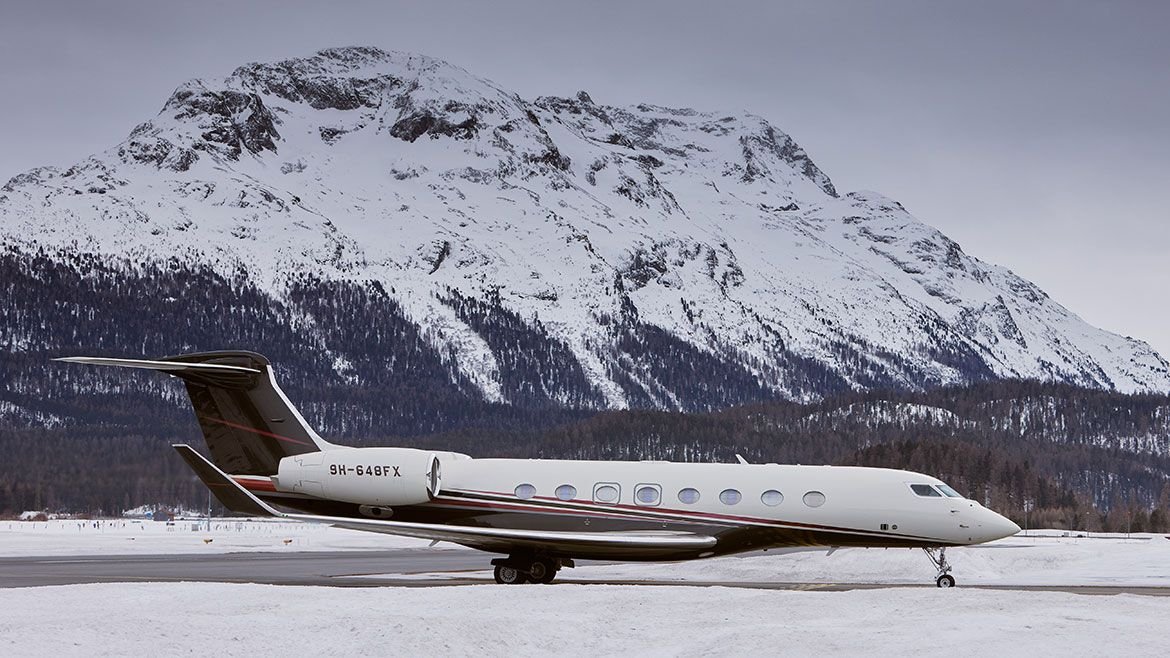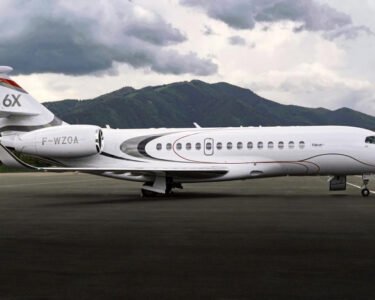It’s not every morning that you’re in the departure lounge at Farnborough Airport in Hampshire, chatting to one of the two pilots who are going to fly you to St Moritz in a private jet. At least not for me.
Sipping my cappuccino as the first rays of sun crested the control tower, I asked Gavin Scott, the captain, casually, “So, how long does it take to learn to fly one of these things?” By “things”, I was referring to Flexjet’s swish Gulfstream G650 that would be whisking me to the Swiss Alps late last month for the 39th Snow Polo World Cup, where Flexjet was fielding a team. “About a month,” said Gavin cheerfully.
But the airstrip at Samedan, the closest to the uber-glamorous Swiss resort, is (he said with a rueful smile and sideways nod) “tricky”. Pilots have to undergo special training. So much for my dreams of joining Flexjet’s roster of pilots by Easter.
Sign up to Money Morning
Don’t miss the latest investment and personal finances news, market analysis, plus money-saving tips with our free twice-daily newsletter
Don’t miss the latest investment and personal finances news, market analysis, plus money-saving tips with our free twice-daily newsletter

Making an entrance into St Moritz
(Image credit: Flexjet)
Ensconced in my wide Gulfstream seat a little later and enjoying a breakfast of smoked salmon and Champagne at 40,000 feet, we were making a beeline for Madrid to pick up a couple more guests. That just goes to show how easy it is to flit across Europe when you have your own private jet. “Lunch in Madrid? Sure, so long as we’re in St Moritz in time for the fourth chukka.”
Viv Diprose, Flexjet’s head of communications, was telling me about the recruitment process. Not only are pilots brimming with experience, but they are also polished to shine when talking to client-owners (see below). Hence Gavin’s good-natured tolerance of my silly questions earlier.
The main Flexjet model is one of fractional ownership. So when you sign up to fly with Flexjet, you fly in an aircraft you part-own. And who would be so gauche as to fly their own private jet? Not least because you could be sitting in the back – comme moi – sipping Champagne and snaffling smoked salmon. I imagine it’s rather like owning your own Bentley and Flexjet does, indeed, have aircraft done up like Bentleys in its fleet.
Victorian pursuits in the snow
A quick stop in Madrid – adios, españa! – and we were on our way to St Moritz for the snow polo. Ours was a full flight and the cabin server did a superb job of keeping our glasses topped up and the sushi rolling. Too soon I saw the snowy peaks of the eastern Alps come into view.
The Gulfstream gave a little wobble on the approach to Samedan and we were down on the ground before I could say “oh, go on then, but this really is my last glass”.

The magnificent Kulm Hotel St Moritz (right) overlooking the lake
(Image credit: Kulm Hotel St Moritz)
A short drive took us to the Kulm Hotel St Moritz, the grand Swiss mountain retreat, with its acres of pinewood and a plethora of century-old sepia photos on the walls of eccentric Britons doing eccentric things – not least the Cresta Run.
In the 1880s, our irrepressible ancestors, with too much time on their hands and not enough sense in their heads, thought it would be jolly to throw themselves down the hill headfirst on trays. Thus began the grandfather of the Olympic sport today known as skeleton racing – only without the helmets.
At the Kulm, the cabinets are bursting with the sport’s gleaming silverware. The spa is also worthy of mention, with its several saunas and steam rooms, large pool, hot tub and outdoor heated pool with bubbles and spectacular views.

Chris Carter (right) gets to grips with a polo mallet
(Image credit: Flexjet)
Prancing on ice
Polo is another example of those madcap Victorian antics. The modern version of the game was invented by British cavalry officers who, again, thought it would be jolly to swap their sabres for mallets and charge after a ball on half-tonne horses.
But you can’t blame the British for taking it to the ice. That was the capital idea of Swiss hotelier Reto Gaudenzi and St Moritz has been hosting the Snow Polo World Cup on its frozen lake since 1985.
It was onto this lake that I waddled last month to watch the equine theatrics, my hands buried in my stylish new black winter jacket, kindly supplied by Mackage, a co-sponsor of the World Cup, with Flexjet.

Flexjet fielded their own snow polo team
(Image credit: Flexjet)
That late January weekend, the sun illuminated the mountains around the resort town against a cloudless blue sky. The weather was glorious. Too glorious, in fact. The matches had to be called off as the spell of warm weather risked turning the snow polo into water polo. Instead, the teams took penalty shots to determine the winner, and Team Mackage came out on top. Hurrah!
Where to next? I cast my mind back to my chat with Gavin in the terminal at Farnborough Airport, at the start of my trip. “But how far could we go in the Gulfstream, I mean really go?”, I had pressed. We could go as far as Tokyo, was the answer. But for that trip, we would need three pilots onboard.
So, theoretically, after my month’s flight training, we really could be eating sushi in Japan in time to see the cherry blossoms. But why go to the trouble? I think I could settle for eating tuna nigiri in the back of my Gulfstream G650, wherever we’re going.

The spacious interior of a Flexjet Gulfstream G650
(Image credit: Flexjet)
How Flexjet works
This might come as a surprise, but flying in a Gulfstream G650 is actually pretty comfortable. It can accommodate up to 12 passengers, plus crew, and some of the seats can be made into beds. There is also a table, a longish galley and the biggest bathroom that I had ever come across at 40,000ft.
As for the decor, each jet is slightly different, but hand-sewn leathers, woods and tailored textiles come as standard in Flexjet’s LXi Cabin Collection. Flatscreen televisions are dotted around and Elon Musk’s Starlink constellation of satellites ensures high-speed internet is kept up the whole way.
Along with the Gulfstream G650, Flexjet also operates the super-midsize nine-passenger Embraer Praetor 600 and the Sikorsky S-76 helicopter as part of its European fleet.
Naturally, there are environmental costs to flying privately. In Europe, Flexjet offsets emissions by 300% for each flight and it sends the data to the University of Cambridge for analysis. It is also moving towards using sustainable aviation fuel (SAF) – which is non-petroleum-based and results in lower levels of harmful emissions – with the goal of using 12% of SAF for its fuel needs by 2030.
And Flexjet is set to become the first operator to fly the eVTOL Eve – essentially an electric helicopter – in the not-too-distant future.
There are three ways to fly with Flexjet:
You can buy a share of an aircraft, starting from a 16th, which equates to 50 of an aircraft’s 800 annual flying hours. A Praetor 600, for example, is valued at around $20m (£16.3m), so a 16th works out at around £1m, with owners committing to contracts of at least 30 months. There is also a monthly management fee, which covers training, insurance, hangaring and administration; and an “occupied hourly rate”, which covers maintenance, pilot fees and catering.
Flexjet also has a flexible lease programme, which provides similar benefits, but without the upfront costs. Lastly, there’s the pre-paid Flexjet Jet Card, charged at an hourly rate, which allows fliers to try the service before making a bigger commitment.
Chris was a guest of Flexjet. Double rooms at Kulm Hotel St Moritz start at CHF 630 (£570) a night in the summer, including breakfast.
This article was first published in MoneyWeek’s magazine and all information was correct at the time of writing. Enjoy exclusive early access to news, opinion and analysis from our team of financial experts with a MoneyWeek subscription.




